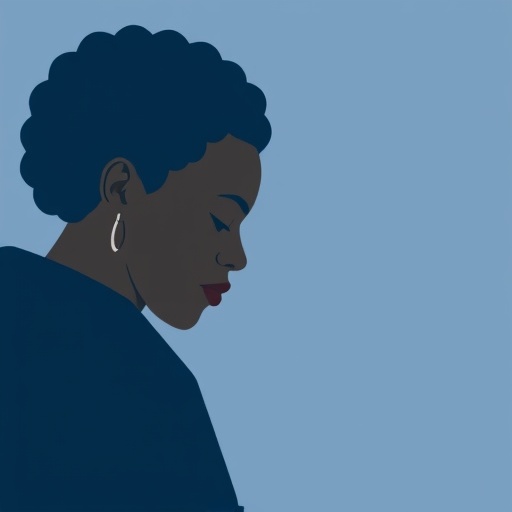LA JOLLA, CA – May 26, 2017 – Scientists at The Scripps Research Institute (TSRI) have made another important advance in HIV vaccine design. The development was possible thanks to previous studies at TSRI showing the structures of a protein on HIV's surface, called the envelope glycoprotein. The scientists used these structures to design a mimic of the viral protein from a different HIV subtype, subtype C, which is responsible for the majority of infections worldwide.
The new immunogen is now part of a growing library of TSRI-designed immunogens that could one day be combined in a vaccine to combat many strains of HIV.
"All of this research is going toward finding combinations of immunogens to aid in protecting people against HIV infection," said TSRI Professor Ian Wilson, Hanson Professor of Structural Biology and chair of the Department of Integrative Structural and Computational Biology at TSRI.
The research, published recently in the journal Immunity, was led by Wilson and TSRI Professor of Immunology Richard Wyatt, who also serves as Director of Viral Immunology for the International AIDS Vaccine Initiative (IAVI) Neutralizing Antibody Center at TSRI.
The new study was published alongside a second study in Immunity, led by scientists at the Karolinska Institute in Stockholm, which showed that the vaccine candidate developed in the TSRI-led study can elicit neutralizing antibodies in non-human primates.
"Together, the two studies reiterate how structure-based immunogen design can advance vaccine development," said Wyatt.
Solving the Clade C Structure
HIV mutates rapidly, so there are countless strains of HIV circulating around the world. Of these strains, scientists tend to focus on the most common threats, called clades A, B and C.
Like a flu vaccine, an effective HIV vaccine needs to protect against multiple strains, so researchers are designing a set of immunogens that can be given sequentially or as a cocktail to people so their immune systems can prepare for whatever strain they come up against.
In 2013, TSRI scientists, led by Wilson and TSRI Associate Professor Andrew Ward, determined the structure of a clade A envelope glycoprotein, which recognizes host cells and contains the machinery that HIV uses to fuse with cells. Because this is the only antibody target on the surface of HIV, an effective HIV vaccine will have to trigger the body to produce antibodies to neutralize the virus by blocking these activities.
Building on the previous original research, the scientists in the new study set out to solve the structure of the clade C glycoprotein and enable the immune system to fight clade C viruses.
"Clade C is the most common subtype of HIV in sub-Saharan Africa and India," explained study co-first author Javier Guenaga, an IAVI collaborator working at TSRI. "Clade C HIV strains are responsible for the majority of infections worldwide."
The scientists faced a big challenge: the clade C envelope glycoprotein is notoriously unstable, and the molecules are prone to falling apart.
Guenaga needed the molecules to stay together as a trimer so his co-author Fernando Garces could get a clear image of the clade C glycoprotein's trimeric structure. To solve this problem, Guenaga re-engineered the glycoprotein and strengthened the interactions between the molecules. "We reinforced the structure to get the soluble molecule to assemble as it is on the viral surface," Guenaga said.
The project took patience, but it paid off. "Despite all the engineering employed to produce a stable clade C protein, these crystals (of clade C protein) were grown in very challenging conditions at 4 degrees Celsius and it took the diffraction of multiple crystals to generate a complete dataset, as they showed high sensitivity to radiation damage," said Garces. "Altogether, this highlights the tremendous effort made by the team in order to make available the molecular architecture of this very important immunogen."
With these efforts, the glycoprotein could then stay together in solution the same way it remains together on the virus itself. The researchers then captured a high-resolution image of the glycoprotein using a technique called x-ray crystallography.
The researchers finally had a map of the clade C glycoprotein.
Vaccine Candidate Shows Promise
In a companion study, the scientists worked with a team at the Karolinska Institute to test an immunogen based on Guenaga's findings. The immunogen was engineered to appear on the surface of a large molecule called a liposome–creating a sort of viral mimic, like a mugshot of the virus.
This vaccine candidate indeed prompted the immune system to produce antibodies that neutralized the corresponding clade C HIV strain when tested in non-human primates.
"That was great to see," said Guenaga. "This study showed that the immunogens we made are not artificial molecules–these are actually relevant for protecting against HIV in the real world."
###
In addition to Wyatt, Wilson and Guenaga, the study, "Glycine substitution at helix-to-coil transitions facilitates the structural determination of a stabilized subtype C HIV envelope glycoprotein," included co-first author Fernando Garces, Natalia de Val, Viktoriya Dubrovskaya and Brett Higgins of TSRI; Robyn L. Stanfield of TSRI and IAVI; Barbara Carrette of IAVI; and Andrew Ward of TSRI, IAVI and the Center for HIV/AIDS Vaccine Immunology & Immunogen Discovery (CHAVI-ID) at TSRI.
This work was supported by the IAVI Neutralizing Antibody Center and Collaboration for AIDS Vaccine Discovery (CAVD; grants OPP1084519 and OPP1115782), CHAVI-ID (grant UM1 AI00663) and the National Institutes of Health (grants P01 HIVRAD AI104722, R56 AI084817 and U54 GM094586).
About The Scripps Research Institute
The Scripps Research Institute (TSRI) is one of the world's largest independent, not-for-profit organizations focusing on research in the biomedical sciences. TSRI is internationally recognized for its contributions to science and health, including its role in laying the foundation for new treatments for cancer, rheumatoid arthritis, hemophilia, and other diseases. An institution that evolved from the Scripps Metabolic Clinic founded by philanthropist Ellen Browning Scripps in 1924, the institute now employs more than 2,500 people on its campuses in La Jolla, CA, and Jupiter, FL, where its renowned scientists–including two Nobel laureates and 20 members of the National Academies of Science, Engineering or Medicine–work toward their next discoveries. The institute's graduate program, which awards PhD degrees in biology and chemistry, ranks among the top ten of its kind in the nation. In October 2016, TSRI announced a strategic affiliation with the California Institute for Biomedical Research (Calibr), representing a renewed commitment to the discovery and development of new medicines to address unmet medical needs. For more information, see http://www.scripps.edu.
Media Contact
Madeline McCurry-Schmidt
[email protected]
858-784-9254
@scrippsresearch
http://www.scripps.edu
############
Story Source: Materials provided by Scienmag




